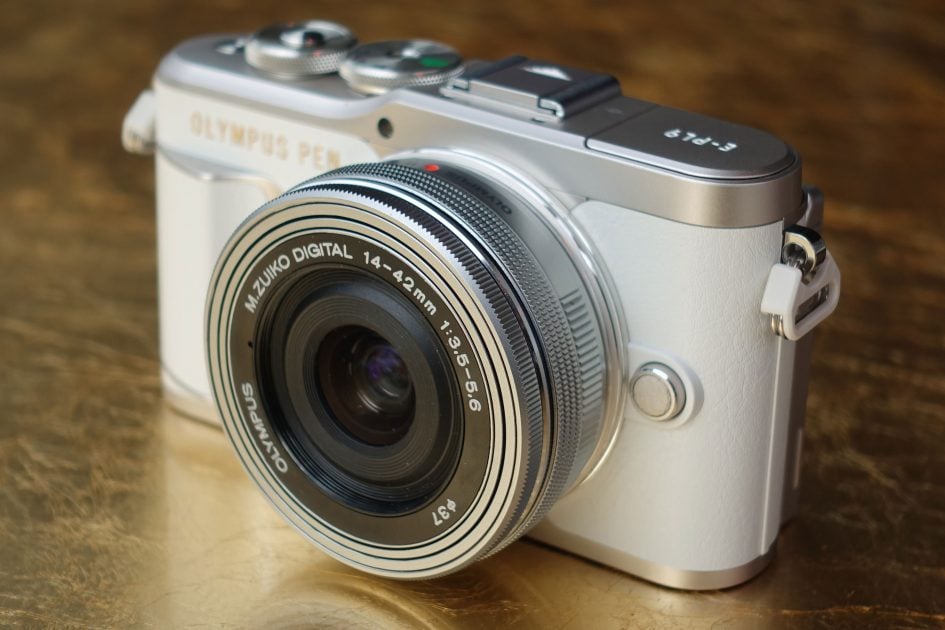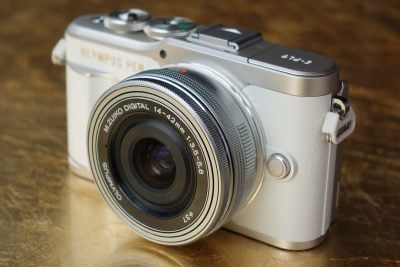Olympus PEN EPL9 review
-
-
Written by Ken McMahon
Verdict
The Olympus PEN E-PL9 is a stylish and compact mirrorless model that’s aimed at bloggers and social photographers, but will doubtless enjoy wider appeal. Indeed it has many of the features of its more advanced sibling, the OMD EM10 Mark III including the most recent TruePic VIII image processor, 4K video and a new AP, or Advanced Photo position on the mode dial.

The E-PL9’s 1040k dot touch-screen faces forwards for selfies and vlogging; the screen folds downwards through 180 degrees to face the subject below the camera body, rather than above it, as on the Fujifilm X-A5. That means you can’t mount the camera on a tripod or vlogging handle with the screen facing forward, which might be an issue. That said, when the X-A5’s screen is folded upwards to face you, it’ll block its hotshoe which in turn means you won’t be connecting an external microphone for better audio. This is a moot point for the Olympus too though as it doesn’t even have a microphone input.
One area where the E-PL9 trails the competition is in its autofocus system. The AF system has been upgraded to 121 points covering a wider area of the frame and for static subjects it works very well. However, the Fujifilm X-A5’s hybrid AF system which combines phase detect with contrast detect points generally does a better job when it comes to tracking moving subjects. However, neither camera excels at continuous autofocus while recording movies. Indeed if you’d like decent autofocus while filming, I’d recommend going for a Sony A5100 or Canon EOS M100. Both of these are key rivals to consider, and right now the EOS M100 is arguably the most tempting of all thanks to its discounted pricing in some regions – see my Canon EOS M100 review and Sony A5100 review for more details.
The Olympus PEN E-PL9 is generally a little bit more expensive than the X-A5, though I suspect that gap may diminish over time. These two cameras have quite a lot in common, including the option of a powered zoom kit lens, a 3inch, 1040k dot touch screen that flips forward for selfies, and built-in Wifi and Bluetooth. On that last point, both models will allow you to transfer images in the background using the Bluetooth connection, but while nearly every aspect of the Olympus smartphone app is smooth and sophisticated, the Fujifilm experience can be clunky and frustrating. You also get much greater control of camera settings when remote shooting with the PEN E-PL9.
The two models also have significant differences. Most importantly, the X-A5’s 24 Megapixel APS C sensor is physically bigger and packs more pixels than the 16 Megapixel Four Thirds sensor in the E-PL9. In my tests the Fujifilm X-A5 outperformed the E-PL9 both for noise at higher ISO sensitivity settings and overall picture quality. But then the sensor in the E-PL9 is stabilised within the body and like all of Olympus’s bodies, it works really well, but if you’re the kind of person who’s likely to stick to a handful of lenses, you may be equally well-served by the optically-stabilised Fujifilm kit zooms.
The E-PL9 offers faster continuous shooting – 8.6fps compared with 6fps on the X-A5, but the X-A5 has 4K burst shooting that produces one second’s worth of 8 megapixel frames. Against that, the X-A5’s 4K video mode is not good for much else, whereas the E-PL9 offers genuine 4k video recording at a usable 30p frame rate.
As always, which of these two models is the best option depends on what kind of photography you plan on doing. For 4k video, the Olympus takes the lead, filming at a smooth 30p vs 15p on the Fujifilm. For 1080p vlogging, there’s not much in it. Both have forward-facing screens and though the E-PL9 wins out on compactness and the ability to use the hot shoe when the screen is flipped, the X-A5 has that all-important external mic socket, but again it’s harder to use being 2.5mm in size and with the hotshoe blocked by the screen when vlogging. Overall though, the X-A5’s superior picture quality and the fact that it undercuts the Olympus on price will, I think, sway a lot of first time system camera buyers in favour of the X-A5.
Final Verdict
The Olympus PEN E-PL9 is an entry-level mirrorless system camera that will appeal to beginners, social photographers and vloggers. Its 16 Megapixel Four Thirds sensor may be smaller and lower resolution than the typical 24 Megapixel APSC sensors of rival models, but it’s stabilised within the body very effectively and delivers great-looking images with ease; indeed it’s only at very high ISOs that you begin to see the lower noise benefit of APSC sensors. The E-PL9’s touchscreen flips down to face-forward for selfies and vlogging, again exploiting the excellent stabilisation, although this in turn blocks the tripod mount and the camera also lacks a microphone input. Unlike the Fujifilm X-A5 though, the 4k video is usable, supporting 30p for smooth motion, while the new AP position on the mode dial gathers together all of the cunning Olympus shooting modes that may otherwise go unnoticed by new owners. Recommended, but compare closely with the Sony A5100, Canon EOS M100 and Fujifilm X-A5.
Check prices on the Olympus Pen E-PL9 at Amazon, B&H, Adorama, or Wex. Alternatively get yourself a copy of my In Camera book or treat me to a coffee! Thanks!



